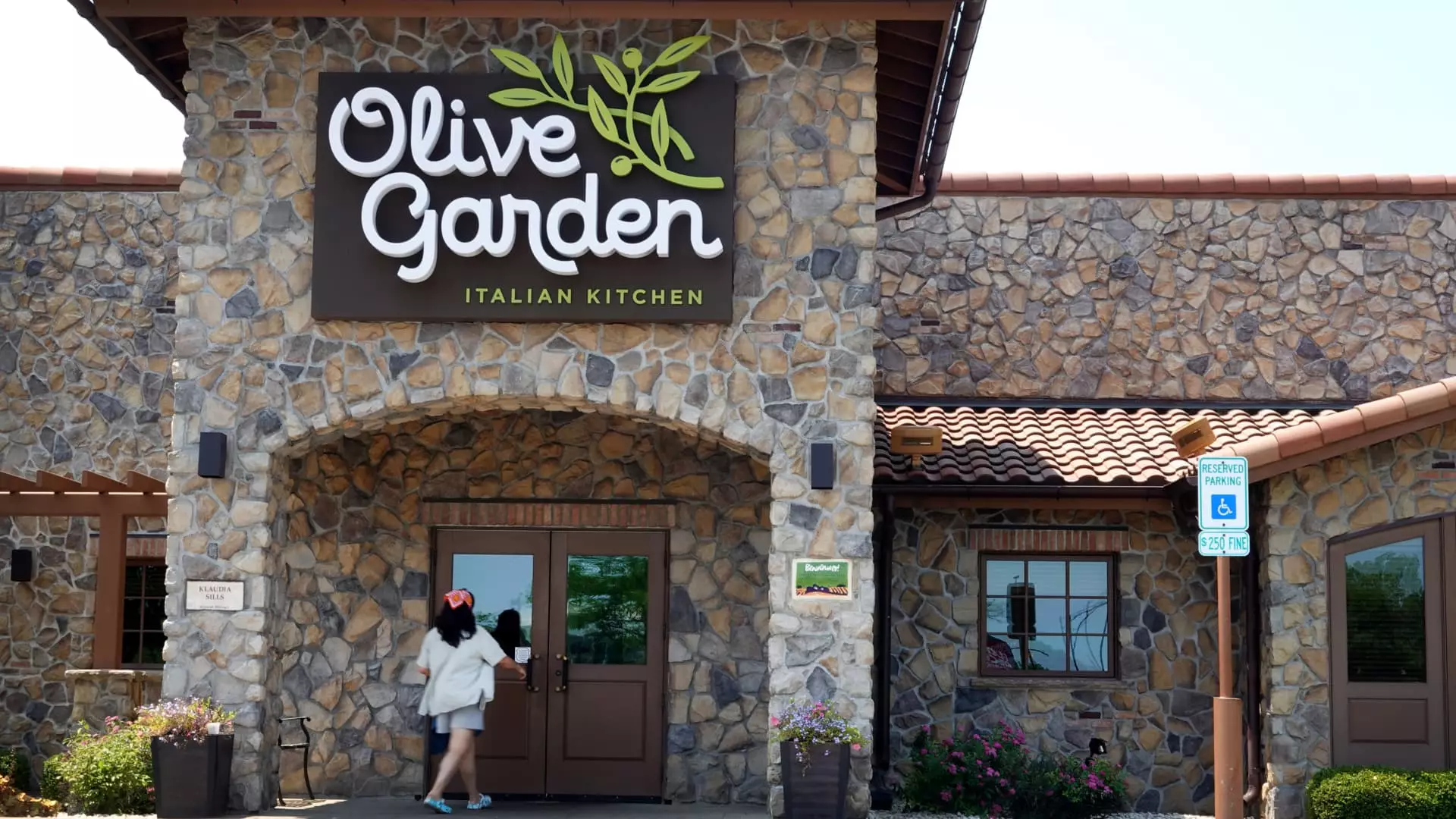In a recent quarterly earnings report, Darden Restaurants showcased a blend of promising growth figures alongside challenges that reflect the current dining landscape. The company’s performance has sparked interest among investors, resulting in a notable rise in share prices, while also illuminating crucial insights into consumer behavior and operational resilience amidst external factors.
Darden reported adjusted earnings per share (EPS) of $2.03 for the fiscal second quarter, slightly beating expectations which were pegged at $2.02. This figure reflects an increase in net income that climbed to $215.1 million, up from $212.1 million a year prior. Meanwhile, net sales reached $2.89 billion—a 6% increase year-over-year, although slightly under analyst expectations of $2.90 billion. A key highlight was the same-store sales growth of 2.4%, surpassing the 1.5% forecast. This performance has led to a significant uptick of 13% in stock price in morning trading, indicating a strong market reaction to the financial results.
CEO Rick Cardenas noted a promising trend among middle-income customers (earning between $50,000 and $100,000), suggesting they have increased their frequency of visits. This data indicates a cautiously optimistic consumer sentiment that could signify a shift in discretionary spending behaviors as economic conditions evolve.
Darden’s various restaurant brands experienced differing levels of success in the quarter. LongHorn Steakhouse led the charge with an impressive same-store sales growth of 7.5%, significantly outperforming market expectations of 4.1%. The chain’s ability to capture customer loyalty through a mix of quality offerings and reasonable pricing has positioned it as a strong performer in the Darden portfolio.
In contrast, Olive Garden, which constitutes over 40% of Darden’s revenue, reported a modest same-store sales growth of 2%. While this again beat analysts’ expectations of 1.4%, it demonstrates the challenges faced by the brand. Nevertheless, the reintroduction of promotions such as the “Never Ending Pasta Bowl” seems to have resonated well with customers, prompting higher spending through protein add-ons.
The fine-dining segment, which includes upscale brands like The Capital Grille and Ruth’s Chris Steak House, faced headwinds with a decline in same-store sales of 5.8%. This drop was more severe than analyst predictions, leading to concerns about consumer affordability in the face of rising prices. The timing of Thanksgiving also played a detrimental role, shifting from the fiscal second to the third quarter and creating a noticeable gap in sales for the high-end dining experiences.
External Influences and Strategic Adaptations
Hurricanes Helene and Milton posed notable challenges for the restaurant chain, particularly for operations in affected areas. Only one restaurant, a Cheddar’s Scratch Kitchen in Asheville, North Carolina, was unable to reopen, but plans are in place for it to resume operations next year. Such external factors underscore the navigational hurdles that Darden faces as it seeks to maintain operational resilience and market stability.
Additionally, the company’s net restaurant openings, totaling 39 new locations and the acquisition of Chuy’s restaurants, signify a commitment to growth and expansion. The acquisition, valued at $605 million, reflects Darden’s strategic efforts to diversify its offerings while preparing to integrate Chuy’s into its overall business framework by 2026.
As a testament to confidence in its business trajectory, Darden updated its fiscal 2025 outlook, raising total sales expectations from $11.8 billion to $12.1 billion. This optimistic revision also includes net earnings per share from continuing operations projected between $9.40 and $9.60. Importantly, the inclusion of Chuy’s in Darden’s future forecasts suggests that the company is strategically positioning itself to capitalize on broader market trends and consumer tastes.
Overall, while Darden Restaurants faces various challenges, including fluctuating consumer preferences and external disruptions, the company has shown a capacity for adaptation through strong promotional strategies and an eye towards expansion. Investors and analysts alike will be keen to monitor how these elements play out in the coming quarters, shaping the future of Darden’s diverse restaurant portfolio.

